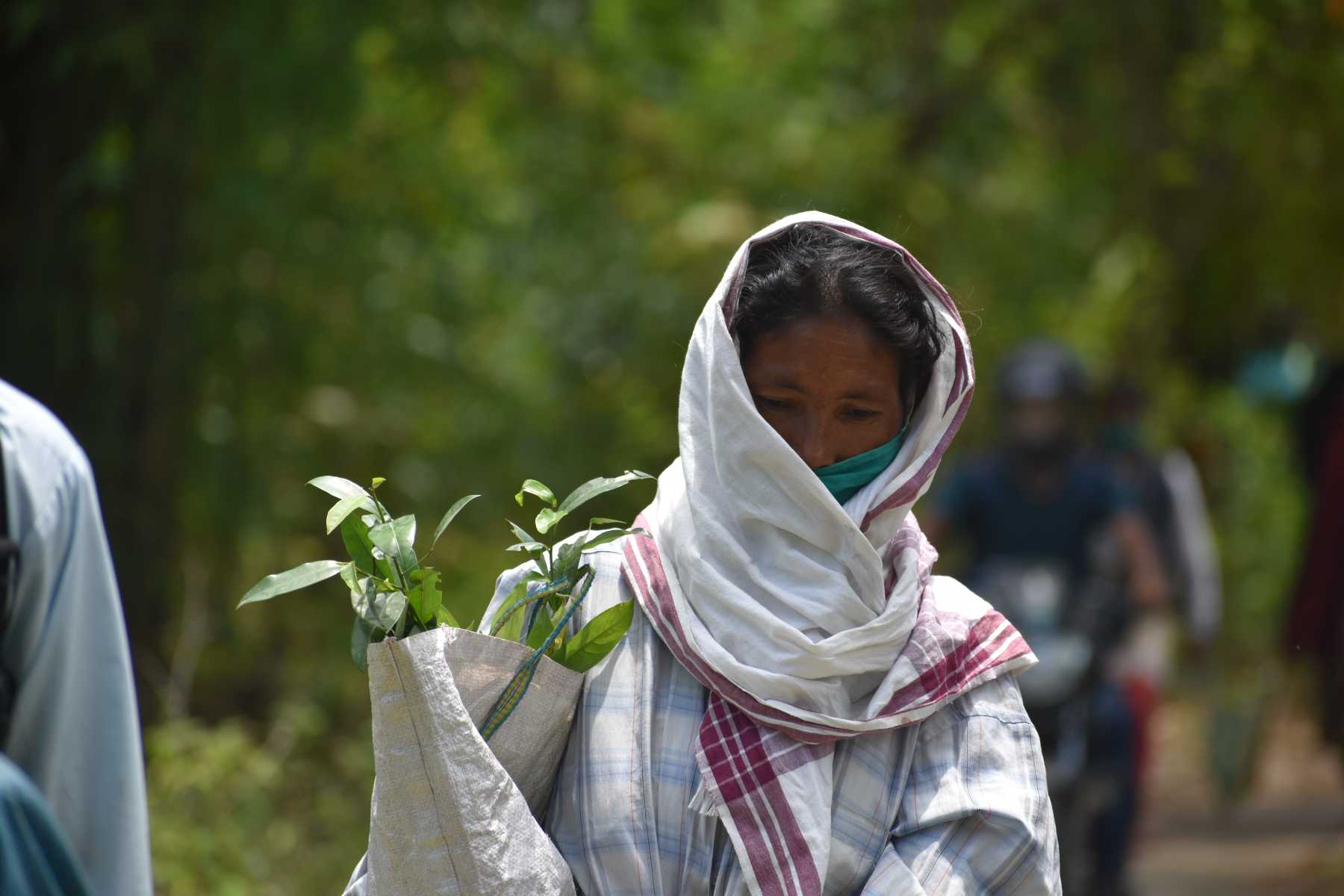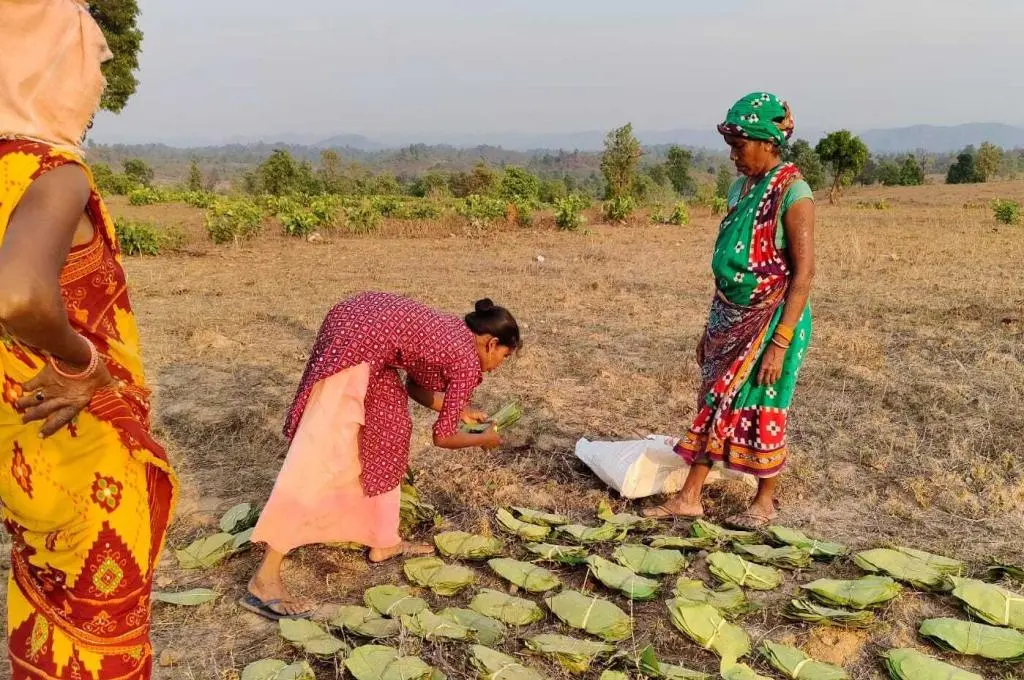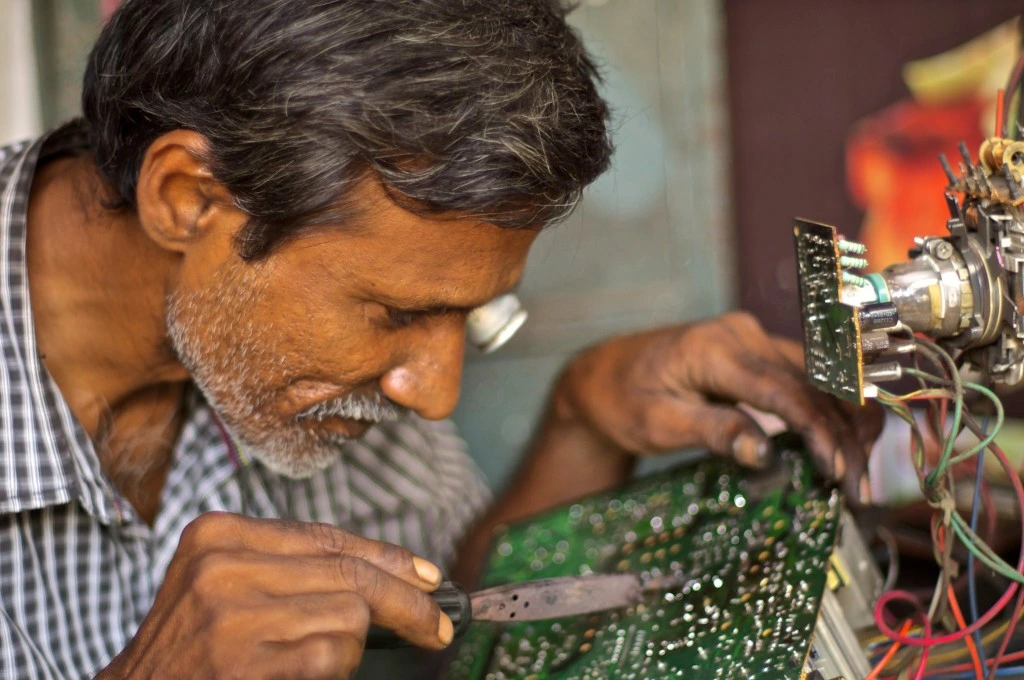We usually think of livelihoods and lives separately, however, it is now time to imagine a more integrated approach. Consider these statistics:
- The 2019 UN-IPBES report—the most recent attempt to holistically assess the major threats to the world’s biodiversity, internationally and across stakeholders—estimates natural disasters caused by biodiversity loss and climate change cost the planet approximately USD 300 billion annually.
- In India, one-third of our GDP depends on nature, and another third is fairly dependent on nature—that’s more than 60 percent of the country’s GDP.
- Fifty-seven percent of our rural communities depend on forest ecosystems for their livelihoods
In essence, ecology is economy. Multiple studies have told us that ecological degradation will spur more droughts, desertification of once fertile soil, water and food insecurity, mass displacement of people, reduced crop yields, and more.
In our work at Balipara Foundation, we are already witnessing what an ecologically degraded, climate unstable future might look like. When we resumed fieldwork in April—after a month-long lockdown due to COVID-19—our communities along the Bhutan-Assam-Arunachal Pradesh border told us story after story about how families were unable to buy seeds or had missed out on crucial planting windows for crops, because of the lockdown. A few months later, the agroforestry plots we had set up were partially swept away in fierce floods, the likes of which had not been witnessed by the local community in the past three decades.
Non-existent crops, fallow fields, sudden and destructive flooding, and subsequently dried up jobs, are effects that are likely to be amplified in the next decade, whether through climate change or emerging pandemics.
If we can build our ecology, we can build our economy
Instead, it has to include managing our ecosystems. Natural resource use has historically been limited to extraction and use as material for consumption, or in other industries (eg, timber, food, fuel, building material, paper, clothing), rather than recognising nature as a service provider (eg, oxygen and carbon cycles, water and climate regulation, pollination, soil restoration). Rethinking how we use this ‘natural capital’ can help achieve a balance between ecology and economy. And, if we can build our ecology, we can build our economy.
Protecting and enhancing natural assets such as land, energy, waste, water, air, and carbon can increase the earning potential for livelihoods.
Livelihoods have an interdependent relationship with natural assets such as land, energy, waste, water, air, and carbon. In many cases, they require the use of these assets; on the other hand, protecting and enhancing these assets can increase the earning potential for livelihoods. In practical terms, this means deriving our food and water needs through regenerative land and water resource management, satisfying our energy needs through hydrogen and solar-based fuels instead of fossil fuels, and satisfying our ever-increasing appetite for materials through reuse and recycling, instead of extraction.
Globally, we are looking at an employment opportunity of up to 395 million new jobs by 2030, if we invest in the sustainable use of degraded aquatic and terrestrial habitats, move to complete renewable energy use, and upgrade our infrastructure to minimise inefficiencies and emissions. Of this, using our lands and oceans (farming, fishing, forestry, and allied industries) more sustainably and regeneratively, in a way that enhances ecosystems, can create 191 million jobs globally and generate business opportunities worth USD 3.6 trillion.
Meeting emissions targets for both the 1.5 and 2-degree rise will also increase India’s net income by up to 25 times over the next few decades, both through minimising spending on climate-related damage (eg, repairing cyclone and flood damage, rehabilitating displaced people) and by reducing climate-driven loss in earnings of nature-dependent sectors (agriculture, forestry, and allied industries).
Well-designed agroforestry, adapted to local conditions and needs, can improve yields for farmers by up to 64 percent in developing countries while putting nutrients into the soil, stabilising water tables, and improving overall biodiversity.
Apart from the business case, moving to an integrated ecology-economy approach is a matter of survival in an increasingly uncertain future. Whether this is extreme weather events like flooding, fires, supercyclones, desertification, or water and food insecurity, an integrated approach will enhance resilience for rural communities, who are already experiencing the early waves of these losses.

Forest restoration and rewilding must take centre stage, through programmes that also provide for community incomes. | Picture courtesy: Balipara Foundation
For example, biodiversity loss in both pollinator species and crop varieties has led to increased vulnerability in agriculture globally, as well as India. Preserving local pollinator species (eg, indigenous bee species vs introducing the Western European honeybee) as well as heirloom seeds and wild varieties of crops can help farmers adapt more effectively to rising temperatures and changing growing conditions through a greater variety in crop options. This can help improve productivity while maintaining their income streams.
What can businesses do?
Livelihood programmes must move beyond the traditional focus on agriculture and livestock to include sustainable forestry, carbon sequestration, and payment for ecosystems services programmes (i.e. payment to communities or local stakeholders to protect/maintain at-risk ecosystems). This should be led by businesses whose value chains are heavily exposed to environmental or biodiversity-related risks, for example, agribusiness, mining, and construction, among others.
Forest restoration and rewilding must take centre stage, through programmes that also provide for community incomes—whether through direct payment for restoration and management of forests, or through establishing agroforestry in forest buffer zones, which communities can sustainably harvest.
Consumer businesses in India have the opportunity to invest in agroforestry and sustainable farming practices. Declines in crop yields due to soil nutrient depletion is a growing problem. Businesses that depend heavily on agricultural produce will see greater and longer-term pay-offs from investments in natural solutions, including organic farming and agroforestry models. Organic or sustainably grown produce also fetch greater prices in global markets, where conscious consumers are willing to pay more for produce that minimises their environmental impact.
The time is ripe for a transformation in accounting systems, which integrates the full scope of profits and losses; not just financial gains, but environmental and social impact as well. Understanding the full value of what we stand to gain and lose is critical in encouraging effective changes in government policies and business practices. Including these measures will integrate previously externalised environmental costs into chains and reveal the ‘real’ cost of our current economic growth.
Measures correlating social, ecological, and economic indicators will help evaluate how sustainable a country’s or business’ growth is.
In doing so, practices that generate environmental and social instability will be rendered less financially attractive to investors. Measures correlating social, ecological, and economic indicators will help evaluate how sustainable a country’s or business’ growth is. It will also identify where losses are likely to occur and enable better policy and practice to minimise those losses.
What can the government do?
Countries around the world are debating their versions of the green new deal. India must break from carbon-centric Keynesian economics and adapt to the 21st-century net-zero vision for carbon neutrality: Investments in its rural communities for forest restoration coupled with agroforestry, sustainable fisheries and horticulture, organic and low-carbon handicrafts, recycling and upcycling industries, green jobs through renewable energy, and energy-efficient green infrastructure.
It should also look to upgrade existing infrastructure both to reduce energy inefficiencies and the environmental damage caused by these assets as they degrade over time.
While on paper India’s joint forest management and compensatory afforestation schemes empower communities to benefit monetarily from planting forests, in practice the profit-sharing pipeline is porous and ineffective, with communities involved in planting rarely benefitting.
Streamlining this through transparent, accountable processes and standards for compensation, as well as providing stronger protection to communities to leverage these programmes is critical in both incentivising forest restoration, and creating nature-centric socio-economic mobility among rural communities. Youth from these communities, in particular, could benefit from nature-centred opportunities at home, through technical training for afforestation and biodiversity management.
India took a step forward when it became the first country to introduce an agroforestry policy in 2014. Since then, however, few states appear to have benefited from this policy, if at all—information about the policy’s implementation on the ground is scanty. Formally implementing its policies for capacity building, decentralisation to community-level institutions such as Joint Forest Management Committees, streamlining regulations on harvesting, and transporting produce across states, will ease the transition from monoculture cultivation towards biodiversity-friendly agriculture. This must be incorporated in addition to India’s 33 percent commitment for forest restoration under the Paris Agreement and the Draft National Forest Policy 2018.
The World Economic Forum’s 2020 report on Global Risks indicates that biodiversity and climate-related risks are now widely acknowledged to be the risks with the highest likelihood and impact. India can no longer afford to have an isolated climate policy, or one that places business interests over environmental concerns—as the draft Environment Impact Assessment (EIA) Notification 2020 does.
Perhaps the greatest and most immediate change we can make is a mindset shift: Nature is no obstacle to the goal of development. Rather, it is the underpinning powerhouse of our economy—and unlike other finite resources, can be regenerated to sustain futures. An integrated, interdependent approach that recognises ecology is economy is the most critical step we can take towards making nature, rural livelihoods, and our economy self-sustaining.
—
Know more
- Learn more about natural capital and alternative approaches to incorporating ecology in economy.
- Understand more about the economic losses posed by unsustainable development, and the opportunities for growth through a green economic recovery.
Do more
- For businesses: Join the Business for Nature coalition and take action to assess your value chains, and make them nature positive.
- For individuals: Join the global movement to divest fossil fuel investments.
- Volunteer with the Balipara Foundation to work on restoring degraded forests across the North East India and sign up for Eastern Himalayan Naturenomics Forum 2020 to be a part of continuing conversations on the intersections of ecology and economy.





